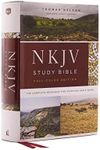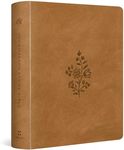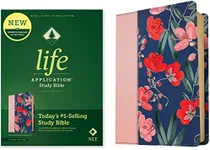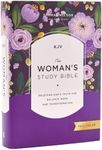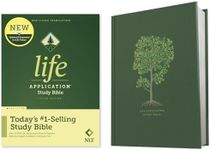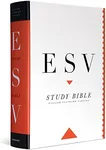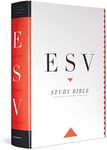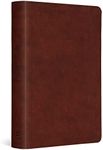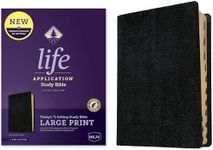Buying Guide for the Best Study Bibles
Choosing the right study Bible can greatly enhance your understanding and interpretation of the scriptures. Study Bibles come with additional features such as commentary, maps, and study notes that can provide deeper insights into the text. When selecting a study Bible, it's important to consider your personal needs, preferences, and the specific features that will best support your study habits and spiritual growth.TranslationThe translation of the Bible is crucial because it affects how you understand the text. Translations range from word-for-word (literal) to thought-for-thought (dynamic) and paraphrased versions. Literal translations like the New American Standard Bible (NASB) are great for in-depth study, while dynamic translations like the New International Version (NIV) are easier to read and understand. Paraphrased versions like The Message offer a more contemporary and relatable language. Choose a translation that aligns with your reading level and study goals.
Study NotesStudy notes are additional explanations and insights provided alongside the scripture text. They can include historical context, theological insights, and practical applications. The depth and focus of study notes can vary widely. Some Bibles offer extensive commentary on nearly every verse, while others provide more general insights. Consider how much additional information you want and whether you prefer notes that focus on historical context, theological analysis, or practical application.
Cross-ReferencesCross-references are links to other parts of the Bible that relate to the verse you are reading. They help you see how different parts of the Bible connect and interpret each other. A study Bible with extensive cross-references can be very helpful for in-depth study and understanding the broader biblical narrative. If you enjoy exploring themes and connections throughout the Bible, look for a study Bible with a robust cross-reference system.
ConcordanceA concordance is an alphabetical list of words found in the Bible, along with their immediate contexts. It helps you find where specific words or themes appear throughout the scriptures. A comprehensive concordance can be a valuable tool for topical studies and for finding specific passages. If you plan to do a lot of word studies or need to locate specific verses quickly, choose a study Bible with a detailed concordance.
Maps and ChartsMaps and charts provide visual aids to help you understand the geographical and historical context of the Bible. They can include maps of biblical lands, timelines of events, and charts of genealogies or themes. These tools can enhance your comprehension of the text by providing a visual context. If you are a visual learner or interested in the historical and geographical background of the Bible, look for a study Bible with detailed maps and charts.
Book IntroductionsBook introductions provide an overview of each book of the Bible, including its authorship, historical context, main themes, and key verses. They help set the stage for your reading and provide important background information. If you like to have a clear understanding of the context and purpose of each book before diving into the text, choose a study Bible with comprehensive book introductions.
Binding and DurabilityThe binding and durability of a study Bible are important for ensuring it lasts through years of use. Options range from paperback to leather-bound editions. Leather-bound Bibles are generally more durable and have a more premium feel, while paperback or hardcover options may be more affordable but less durable. Consider how often you will use your Bible and whether you need a more durable option for frequent use.



